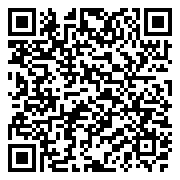

REF: SC3254580
DATES: 27 - 31 Oct 2025
CITY: Cape Town ( South Africa)
FEE: 3300 £
All Dates & LocationsEffective critical equipment management is essential for ensuring safety, optimizing productivity, and maintaining operational efficiency. This training course is designed to equip participants with the skills and knowledge needed to identify critical equipment, assess risks, and implement best practices for critical equipment monitoring and maintenance.
Participants will gain a thorough understanding of what is critical equipment, its role in business continuity, and strategies for maintaining safety-critical equipment. The course will also cover critical equipment analysis, methods for conducting an equipment criticality assessment, and techniques for integrating modern technologies such as IoT and predictive analytics into critical process equipment management.
By completing this course, participants will be able to:
Understand the critical equipment definition and its significance in operations.
Develop structured methodologies for critical equipment identification across various industries.
Conduct critical equipment analysis to prioritize assets based on risk and business impact.
Implement maintenance strategies to enhance the performance and reliability of safety-critical equipment.
Utilize tools for critical equipment monitoring and proactive maintenance planning.
What is critical equipment? Definition, importance, and identifying key characteristics.
Role of critical equipment in business operations and process continuity.
The impact of equipment failure on productivity, safety, and operational efficiency.
Categories of critical equipment meaning: mission-critical, safety-critical equipment, and operational-critical assets.
Integrating critical equipment management with asset management best practices.
Key identification factors: equipment criticality rating, downtime, costs, safety concerns, and regulatory needs.
Establishing criteria for critical equipment identification.
Equipment criticality assessment: Factors like frequency of use, failure consequences, and replacement costs.
Developing a risk-based framework for prioritizing assets.
Applying Failure Modes and Effects Analysis (FMEA) to predict potential failure impacts.
Critical equipment analysis using performance, failure, and business impact data.
Building a prioritization matrix for efficient asset management.
Business impact analysis of equipment failures and downtime.
Performing a failure risk assessment based on likelihood and consequences.
Utilizing equipment criticality rating methods for asset ranking.
Leveraging historical data for better decision-making in equipment maintenance.
Addressing process safety-critical equipment risks and compliance requirements.
Preventive maintenance approaches for critical role equipment.
Implementing condition-based monitoring through IoT and smart sensors.
Spare parts management strategies for critical care equipment list.
Applying Reliability-Centered Maintenance (RCM) principles.
Training maintenance teams for enhanced critical equipment monitoring and reliability.
Using Computerized Maintenance Management Systems (CMMS) for asset tracking.
Smart sensors and IoT applications in critical process equipment monitoring.
Key Performance Indicators (KPIs) for tracking equipment performance (MTBF, MTTR, availability).
Implementing Lean, Six Sigma, and Total Productive Maintenance (TPM) for continuous improvement.
Case studies on critical equipment management success across industries.
Gain expertise in critical equipment identification and risk assessment.
Improve asset reliability through advanced critical equipment monitoring techniques.
Reduce downtime by optimizing critical process equipment maintenance strategies.
Enhance compliance with safety and regulatory standards for safety-critical equipment.
Master modern tools like IoT and CMMS for efficient critical equipment management.
Mastering critical equipment management is essential for optimizing business operations and ensuring long-term asset reliability. This course provides participants with the skills and tools needed to conduct critical equipment analysis, implement equipment criticality assessment frameworks, and integrate smart technologies into critical process equipment monitoring. By enhancing maintenance strategies and ensuring safety-critical equipment compliance, organizations can achieve greater efficiency and resilience.
Enroll now to elevate your expertise in critical equipment management and drive operational success!
